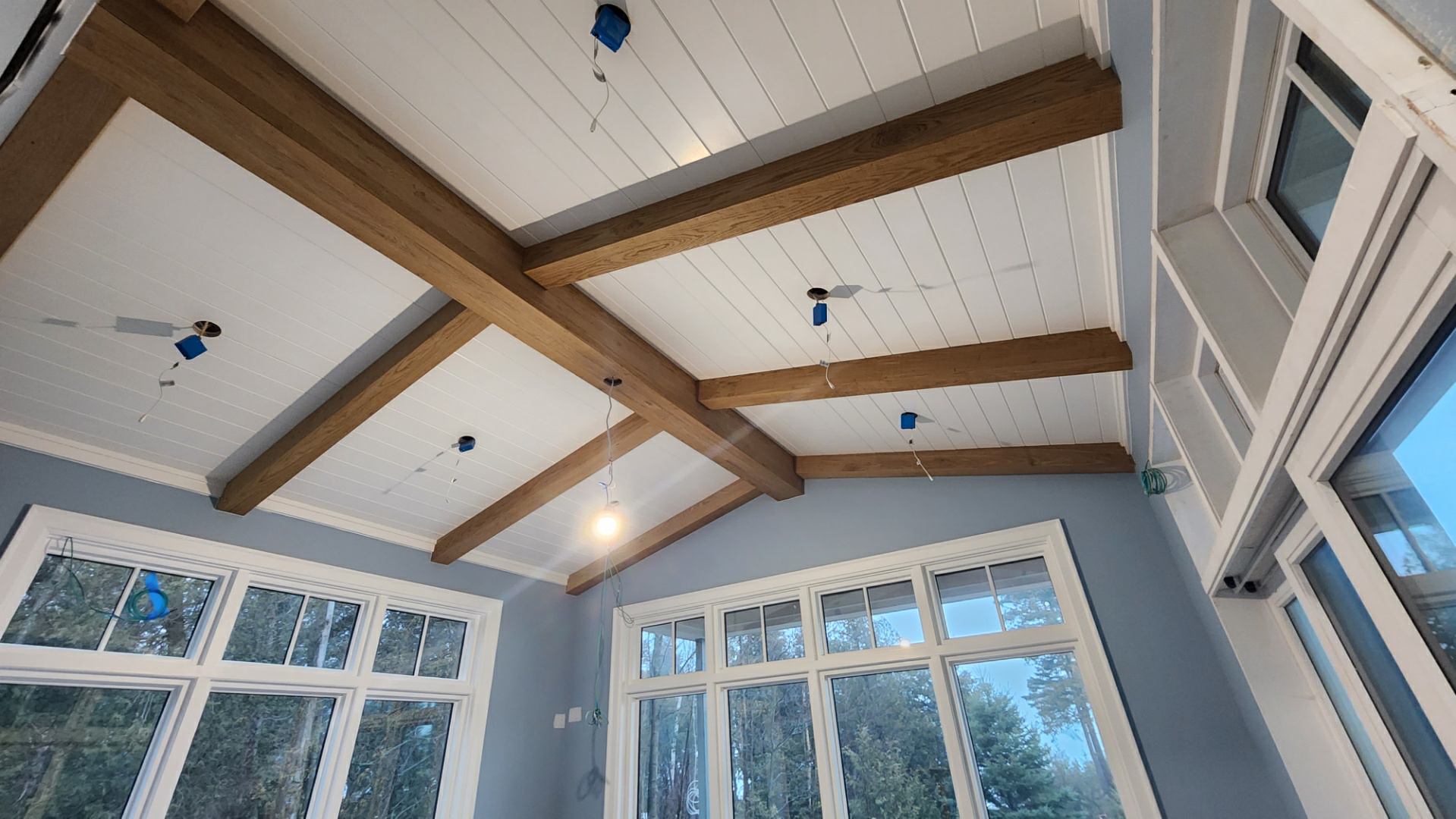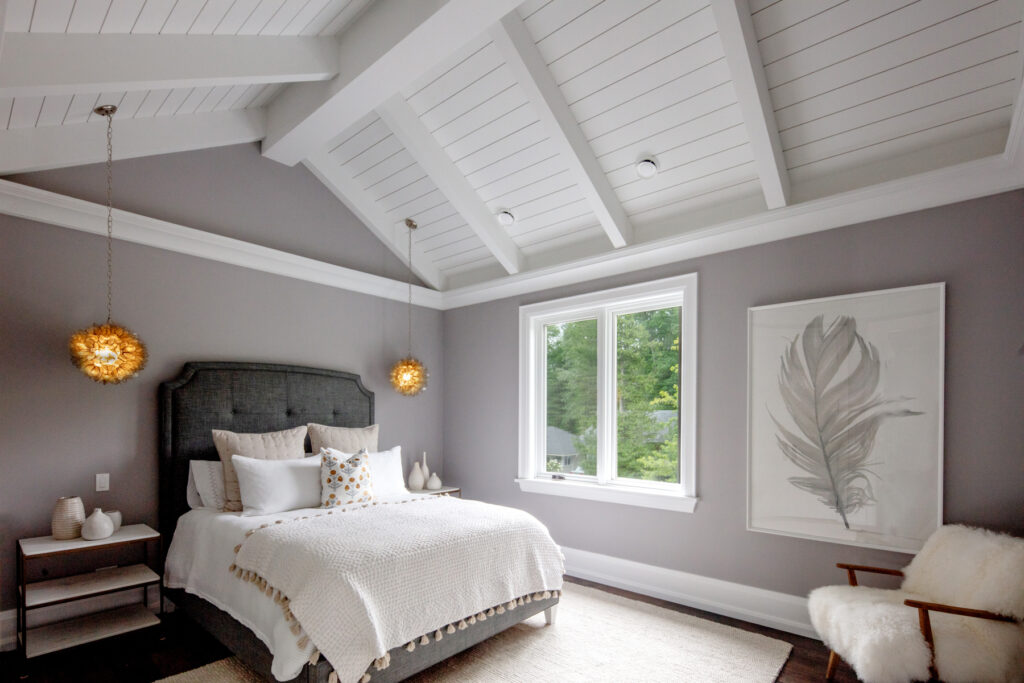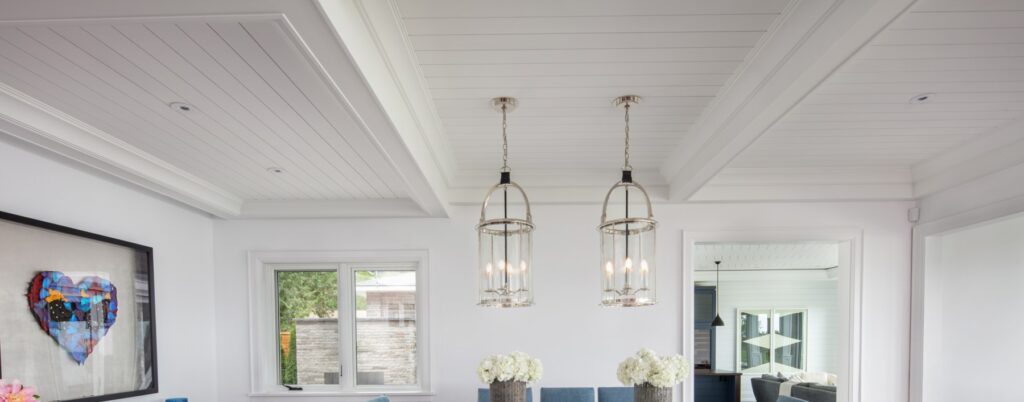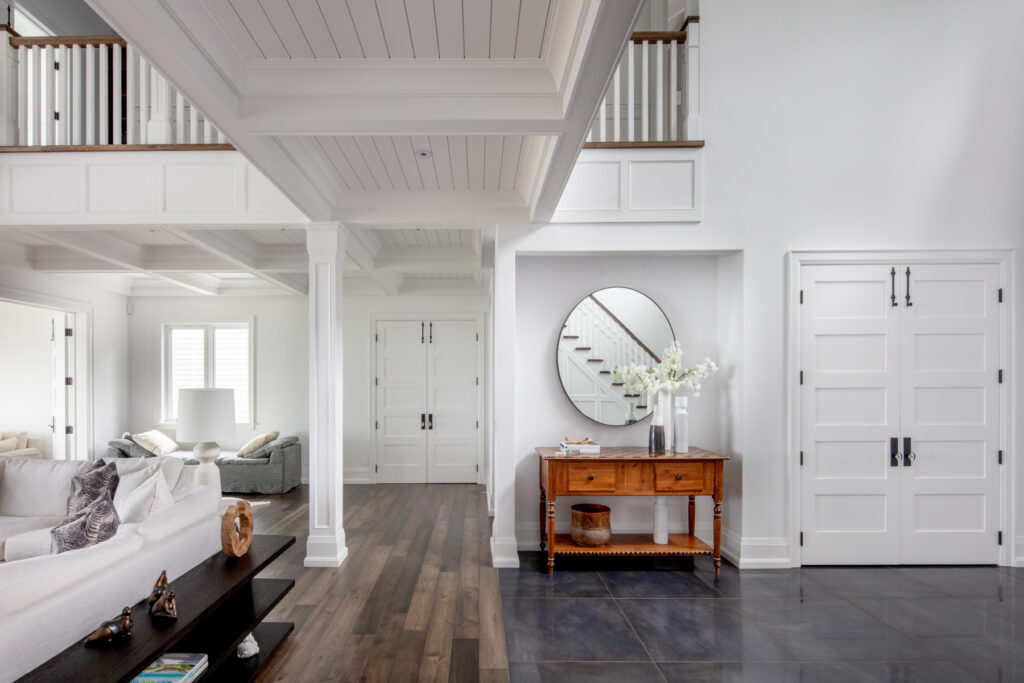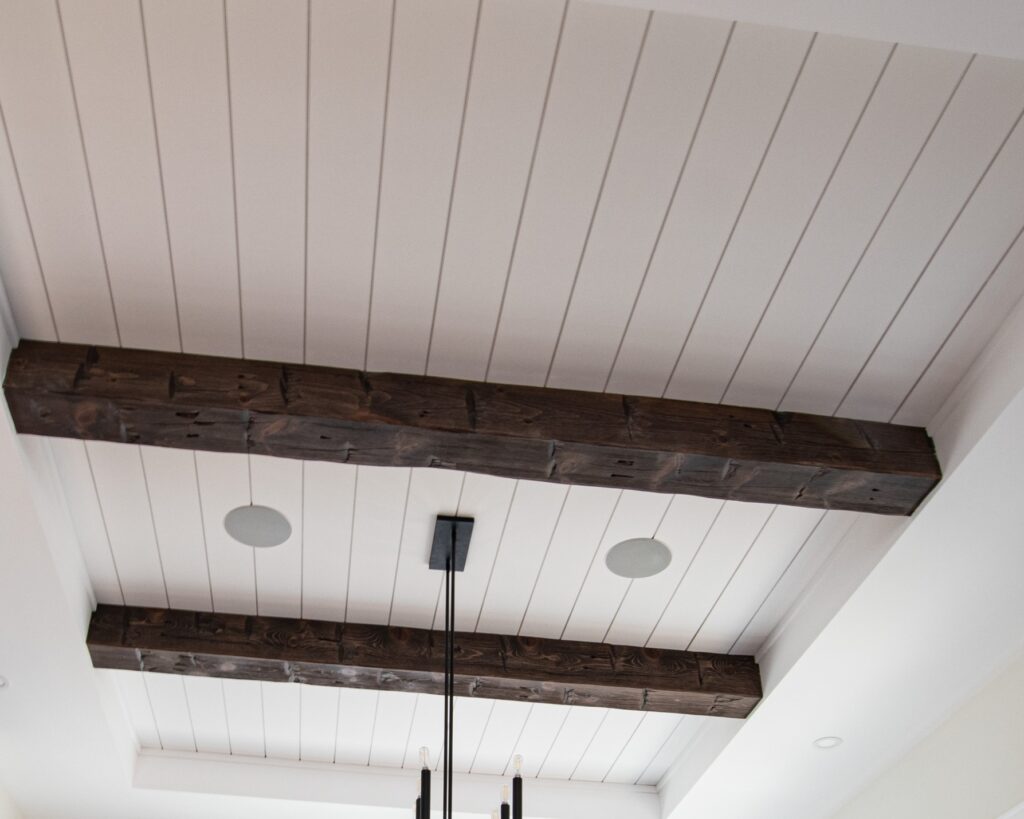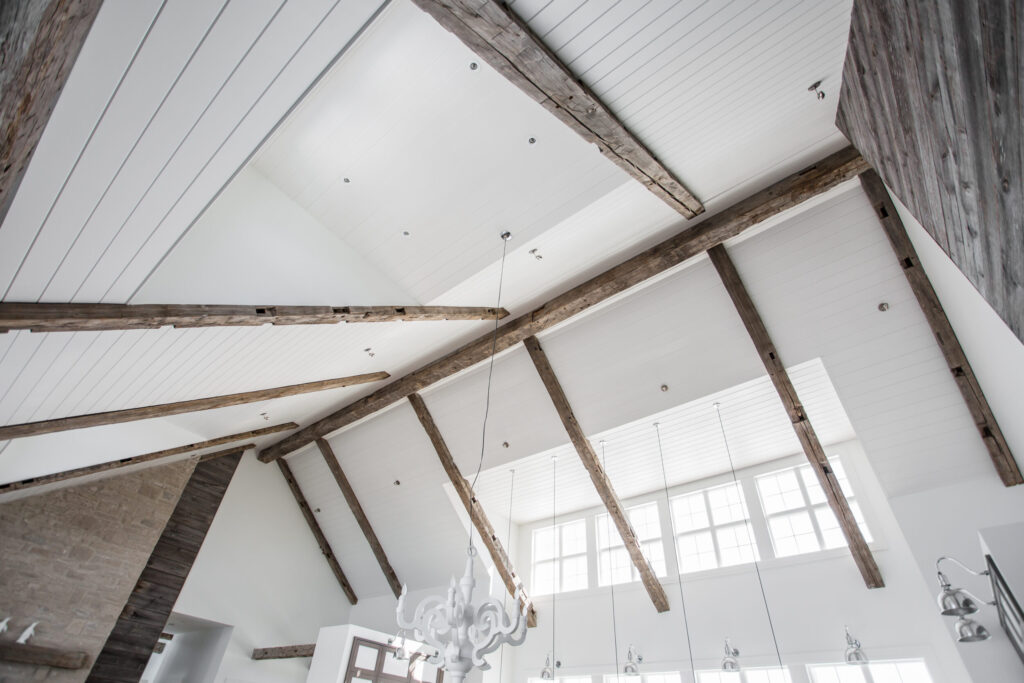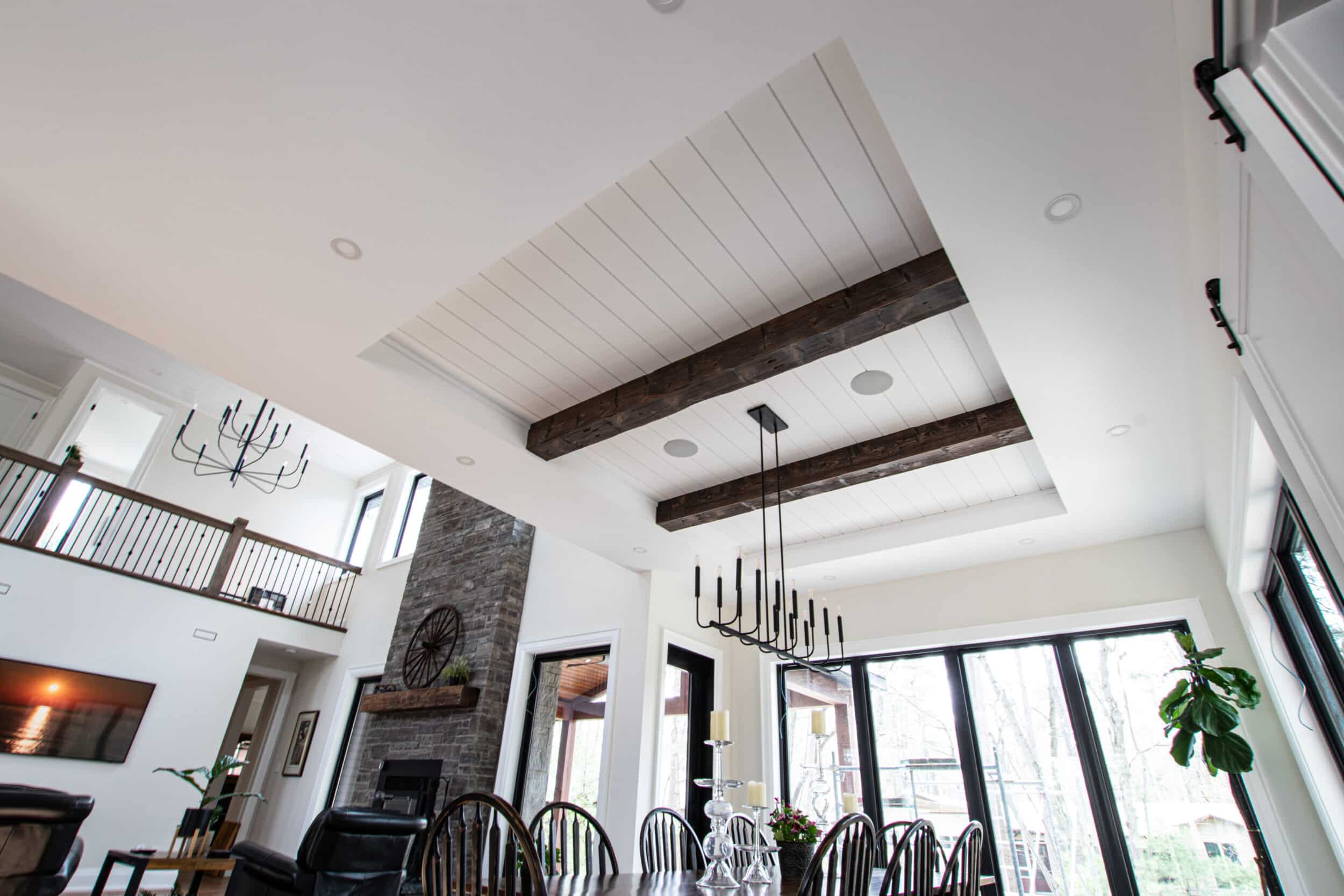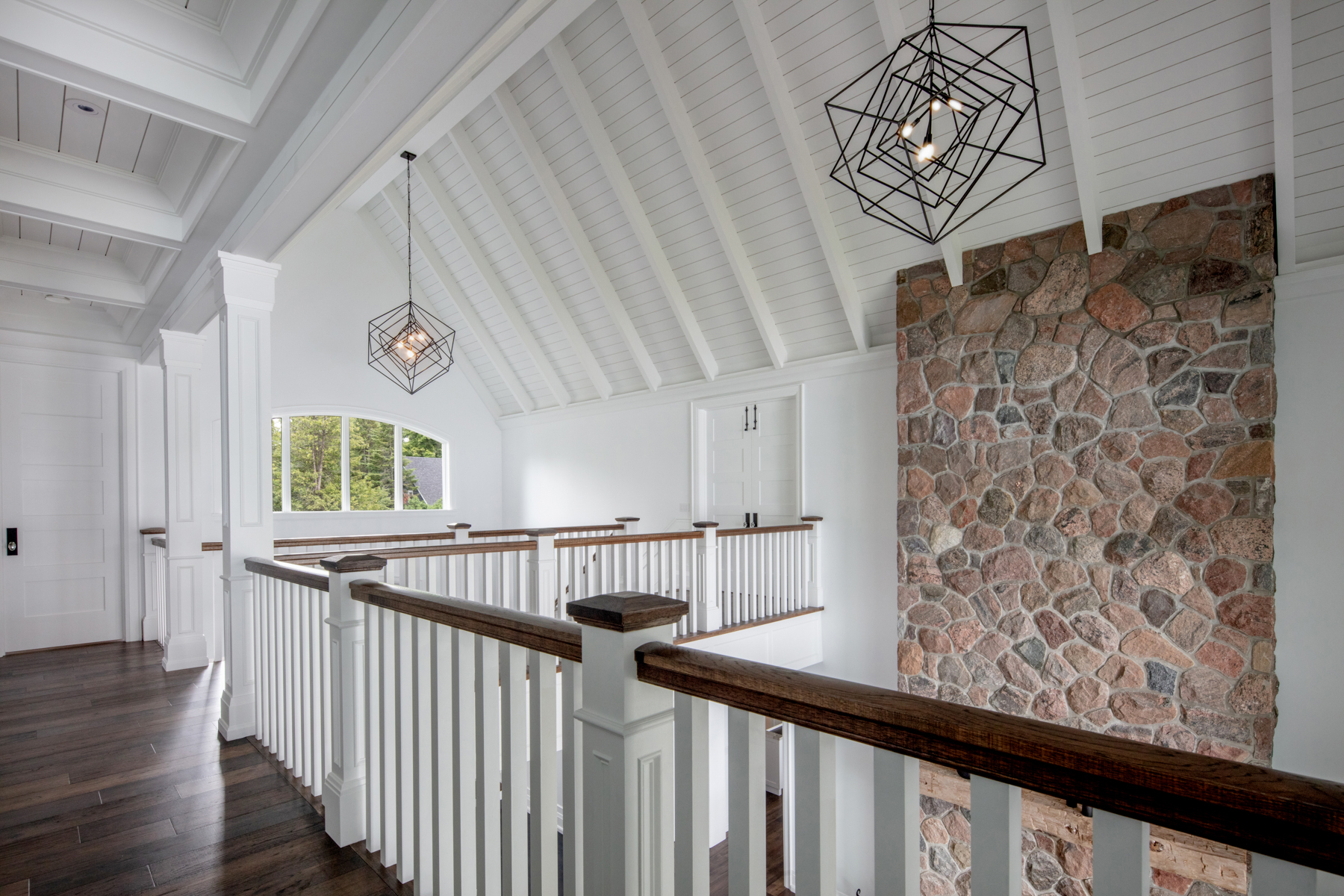
Tongue and Groove Ceilings
Tongue and groove ceilings use an interlocking design to provide a durable surface, while flexible finishing allows you to add visual interest in your own way.
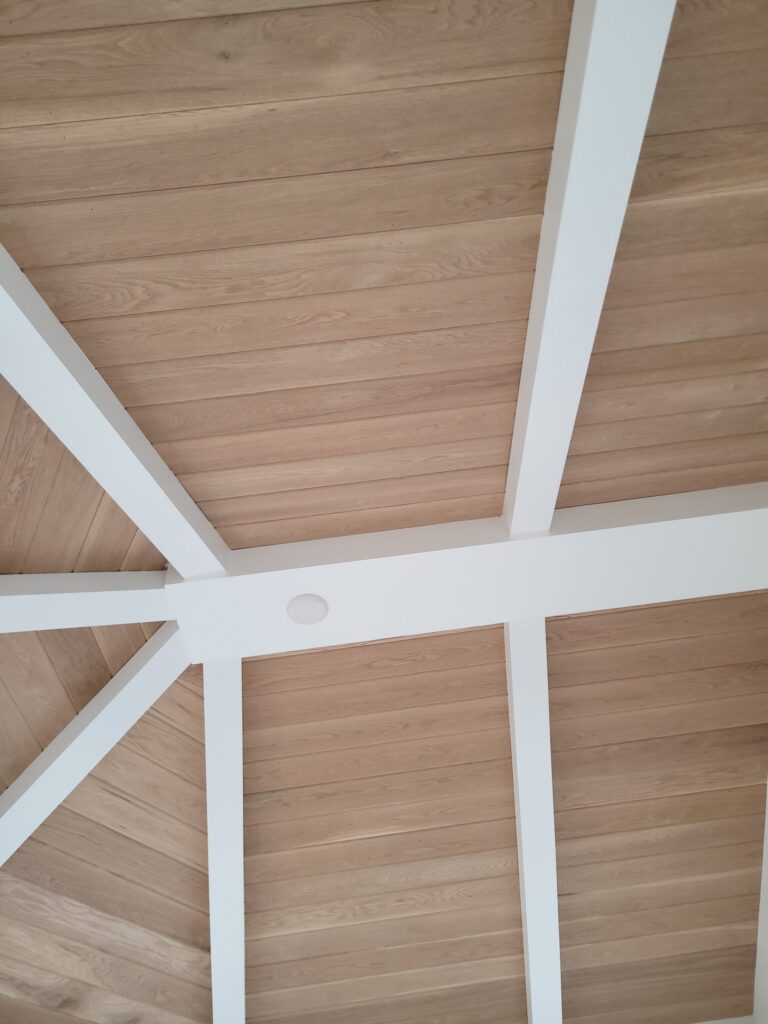
What is Tongue and Groove?
Tongue and groove planks are fitted together seamlessly by joining the “tongue” (a protruding ridge) with the “groove” (a matching slot) on the other edge. This construction method is commonly used in flooring, ceilings, and wall paneling to create a smooth and sturdy surface with minimal gaps between the boards. The interlocking design helps to prevent wood from shifting or warping over time and creates a clean, uniform look.
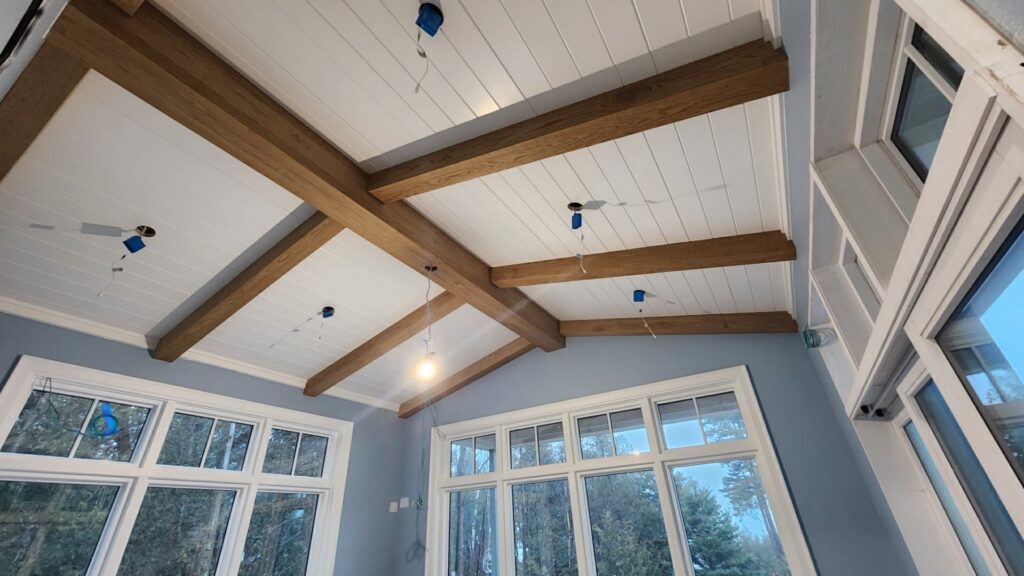
Features of a Tongue and Groove Ceiling
Tongue and groove ceilings are an excellent choice for any space in your house, from bedrooms to dining rooms. Similar to shiplap ceilings, tongue and groove panels can be combined with faux beam and coffered ceilings to enhance the appeal of a larger space. This type of ceiling design can be tailored to suit a more traditional or contemporary look, depending on your finishing choices.
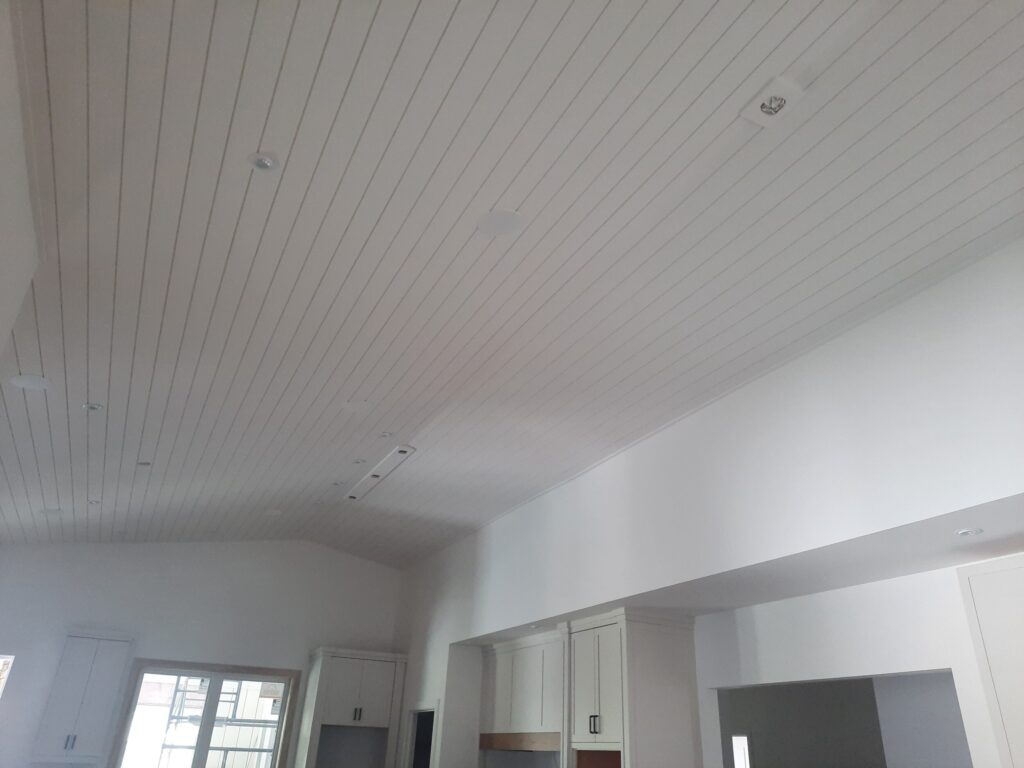
Adds Visual Interest
There is a classic appeal to a tongue and groove ceiling, which makes it a great way to add visual interest to your home in a renovation. The textured look of the panels draws the gaze upwards and creates a sense of depth in your space. Additional finishing choices can help to further make your ceiling stand out and blend in with the rest of your home’s interior design

Flexible Finishing & Installation
Tongue and groove panels offer a variety of finishing options, including painting and staining. You can even choose to leave the wood its natural colour for a more rustic and traditional look. The boards can be installed in a variety of patterns, including herringbone and chevron, to add character and interest to the ceiling.
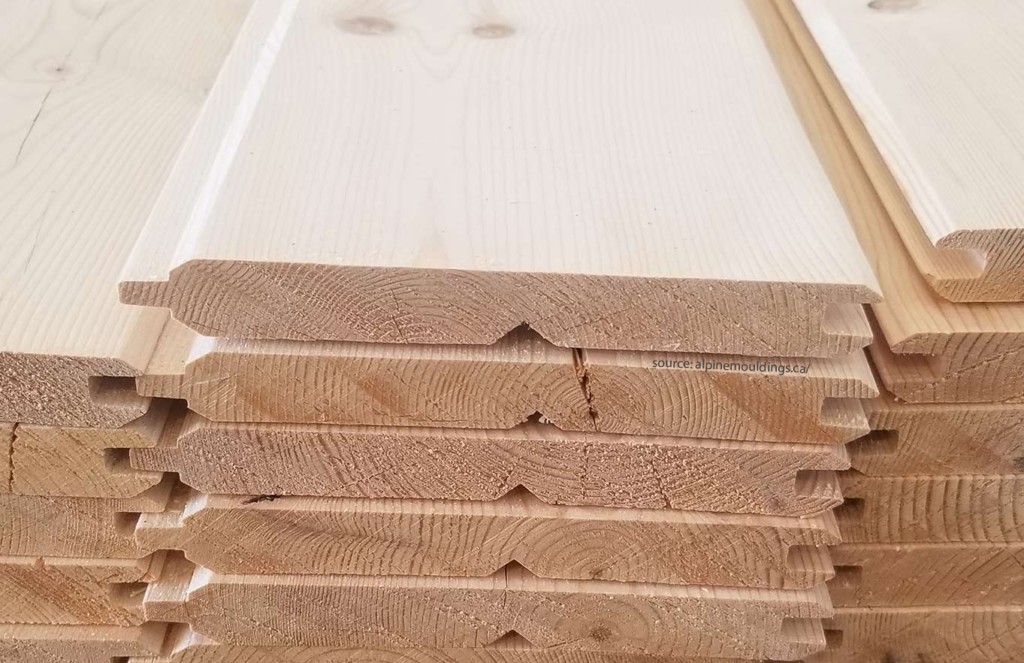
Durable and Resistant
The interlocking design of tongue and groove ceiling planks provide improved structural stability and help to minimize movement caused by changes in temperature or humidity. When properly sealed, tongue and groove ceilings can even be used in moisture-prone areas like bathrooms and kitchens. The tight fit prevents moisture from seeping between the boards and can also help with sound insulation, reducing noise transmission between floors.

